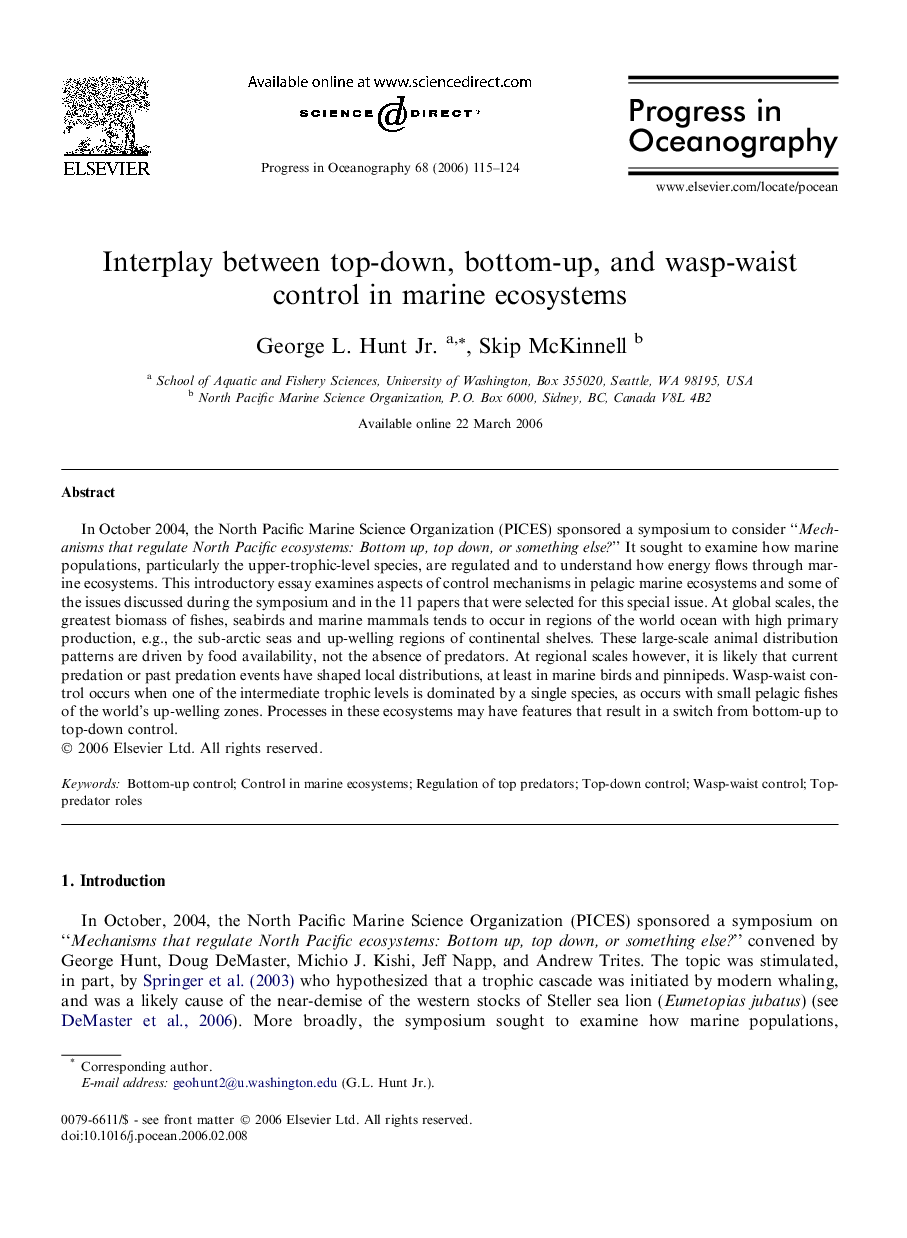| Article ID | Journal | Published Year | Pages | File Type |
|---|---|---|---|---|
| 4553975 | Progress in Oceanography | 2006 | 10 Pages |
In October 2004, the North Pacific Marine Science Organization (PICES) sponsored a symposium to consider “Mechanisms that regulate North Pacific ecosystems: Bottom up, top down, or something else?” It sought to examine how marine populations, particularly the upper-trophic-level species, are regulated and to understand how energy flows through marine ecosystems. This introductory essay examines aspects of control mechanisms in pelagic marine ecosystems and some of the issues discussed during the symposium and in the 11 papers that were selected for this special issue. At global scales, the greatest biomass of fishes, seabirds and marine mammals tends to occur in regions of the world ocean with high primary production, e.g., the sub-arctic seas and up-welling regions of continental shelves. These large-scale animal distribution patterns are driven by food availability, not the absence of predators. At regional scales however, it is likely that current predation or past predation events have shaped local distributions, at least in marine birds and pinnipeds. Wasp-waist control occurs when one of the intermediate trophic levels is dominated by a single species, as occurs with small pelagic fishes of the world’s up-welling zones. Processes in these ecosystems may have features that result in a switch from bottom-up to top-down control.
